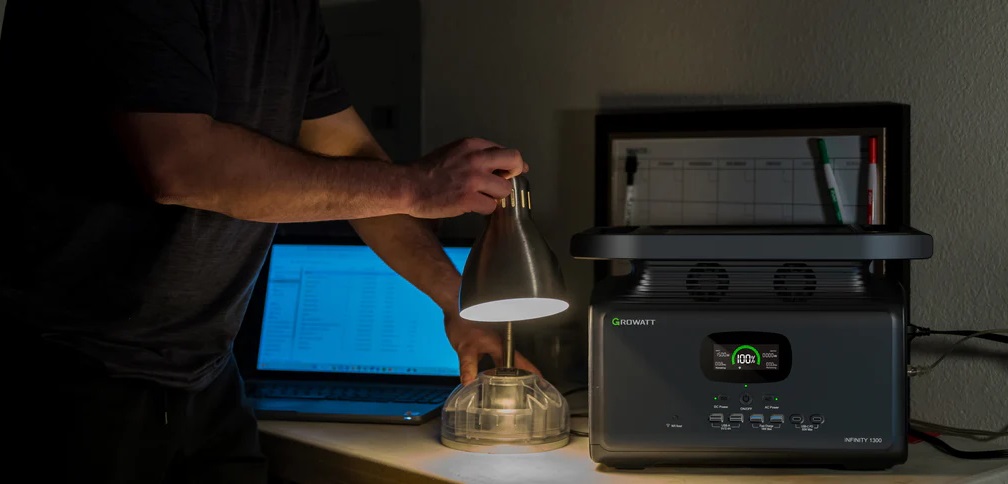Many people ask, what is a rolling blackout? Rolling blackouts are common during peak electricity demand periods or natural disasters. It is a planned and controlled power outage implemented by utility companies to prevent the power grid from collapsing. Rolling blackouts typically last a few hours and are rotated among different areas to avoid prolonged power outages.
Rolling blackouts, however, can cause chaos and inconvenience, especially during the hot summer months when air conditioning is essential. Portable solar generators come in handy as a backup power source during blackouts.
What are Portable Solar Generators?
Portable solar generators are battery-powered devices that use photovoltaic (PV) panels to convert sunlight into electrical energy. The photovoltaic (PV) panels absorb sunlight and convert it to direct current (DC) electricity. The direct current (DC) electricity is then stored in a battery or fed through an inverter to produce alternating current (AC) electricity used by most household appliances.
Portable solar generators are lightweight and compact, making them easy to transport and store. They are also environmentally friendly, emitting no harmful pollutants or greenhouse gases, making them an excellent choice for reducing their carbon footprint.
How Can Portable Solar Generators Help During Rolling Blackouts?
A backup power source is critical during rolling blackouts, especially if you rely on medical equipment or have small children or elderly family members. During blackouts, portable solar generators can provide a dependable and continuous power source.
The portability of portable solar generators is one of their advantages. You can move them around your house and place them in areas with the most sunlight to maximize power production. They can power essential appliances like refrigerators, lights, and fans, keeping you comfortable during a blackout.
Another benefit of portable solar generators is their ability to be recharged by sunlight. You can recharge the batteries and keep your appliances running if there is sunlight. This means that, unlike traditional generators, you won't have to worry about running out of fuel or gas.
Types of Portable Solar Generators
Portable solar generators are classified into two types: standalone and integrated.
- Portable standalone solar generators are battery-powered devices with built-in PV panels. They are typically lightweight and easy to transport. Portable solar generators are an excellent option for those requiring a backup power source during an emergency.
- Integrated solar generators are intended to be connected to existing solar panels or a solar array. They can power your home during power outages while lowering your utility bills. Portable solar generators with integrated batteries are a more permanent solution that requires professional installation.
Considerations When Choosing a Portable Solar Generator
There are several factors to consider when selecting a portable solar generator, including:
Power output
Check that the generator has enough power to power your essential appliances.
Battery capacity
A larger battery capacity means more power storage and the ability to use the generator for longer periods.
Portability
If you plan on moving the generator around your home, ensure it is lightweight and easy to move.
Charging time
Consider the charging time, especially if you live in an area with limited sunlight.
Durability
Look for a generator made of high-quality materials that can withstand inclement weather.
Conclusion
Rolling blackouts can be a frustrating and difficult experience. Still, with a portable solar generator, you can have peace of mind knowing you have a dependable and continuous power source. Portable solar generators are environmentally friendly, simple to use, and can power critical appliances during power outages. When selecting a portable solar generator, consider power output, battery capacity, and portability.


